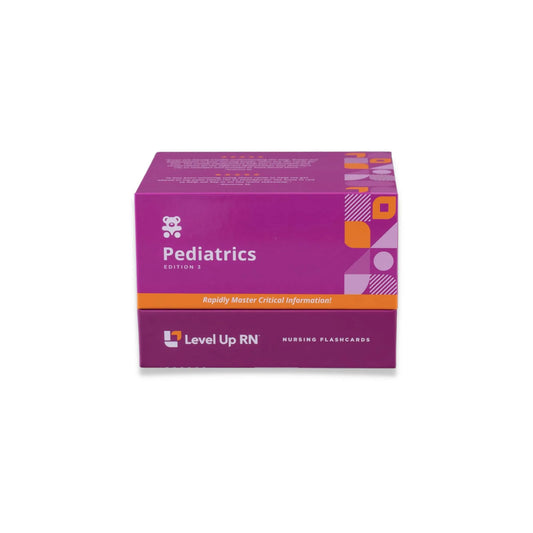Pediatrics, part 89: Integumentary Disorders - Scabies & Lice
Full Transcript: Pediatrics, part 89: Integumentary Disorders - Scabies & Lice
Full Transcript: Pediatrics, part 89: Integumentary Disorders - Scabies & Lice
Hi, I'm Cathy with Level Up RN. In this video, I will be discussing scabies and lice. And at the end of the video, I'm going to give you guys a quiz to test your understanding of some of the key facts I'll be covering. So definitely stay tuned for that. And if you have our Level Up RN pediatric nursing flashcards, go ahead and pull out your flashcards on scabies and lice so you can follow along with me and pay close attention to the bold red text on the back of these cards because those are the things that you are likely to see show up on a nursing school exam. First up, let's talk about scabies.
Scabies is a contagious skin infestation that is caused by a mite. Signs and symptoms include severe pruritus, which is a fancy name for itching, as well as a pimple-like rash. Another key symptom of scabies is the presence of burrows, which occur when female mites tunnel just under the skin surface. These present as grayish-white lines that can often be found in between the fingers and in the skin folds. Treatment of scabies includes the application of a scabicide such as permethrin 5%. The scabicide needs to be applied from head to toe and left on for an extended period of time, such as between 8 and 14 hours. And then it needs to be reapplied one week later. And it's recommended that all household members be treated. To prevent reinfestation, clothes and linens need to be washed in hot water and dried on high heat. And for items that cannot be washed in hot water, they need to be placed in a tightly sealed bag for at least several days.
Next up, let's talk about lice. And specifically, we'll be talking about pediculosis capitis, which is a lice infestation of the hair and scalp. It is super common in school-aged children, and it is typically spread through head-to-head contact but can also be spread through objects such as brushes, hats, and pillows. Signs and symptoms of a lice infestation include pruritus, which, again, is a fancy name for itching, as well as visible lice or nits in the child's hair. So nits are lice eggs which kind of resemble tiny grains of rice. So our cool chicken hint to help you remember this is if it looks like rice, it could be lice. Treatment of lice includes the application of a medicated shampoo that contains a pediculoside, such as permethrin, followed by removal of nits using a fine-tooth comb or a special nit comb. And then most experts recommend a second treatment 7 to 10 days later. In terms of family teaching, all household members will need to be examined and possibly treated. And then to prevent reinfestation, clothing and linens will need to be washed in hot water and dried on high heat. And non-washable items will need to be placed in a tightly sealed bag for approximately two weeks.
All right. It's quiz time, and I've got three questions for you.
Question number one, grayish-white lines in between the fingers are indicative of blank?
The answer is burrows, which are a key symptom of scabies.
Question number two, how is lice treated?
The answer is with a medicated shampoo that contains a pediculoside followed by removal of nits with a fine-tooth comb.
Question number three, how should non-washable items be handled to prevent lice reinfestation?
The answer is they should be placed in a tightly sealed bag for approximately two weeks.
All right. That's it for this video. I hope it was helpful. Take care and good luck with studying.


